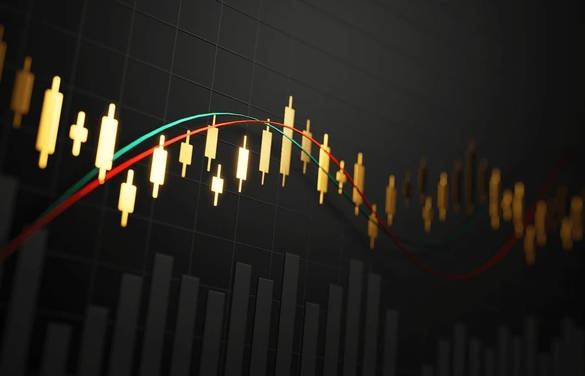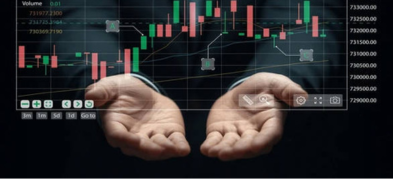
Ultima Markets App
Trade Anytime, Anywhere
Important Information
This website is managed by Ultima Markets’ international entities, and it’s important to emphasise that they are not subject to regulation by the FCA in the UK. Therefore, you must understand that you will not have the FCA’s protection when investing through this website – for example:
- You will not be guaranteed Negative Balance Protection
- You will not be protected by FCA’s leverage restrictions
- You will not have the right to settle disputes via the Financial Ombudsman Service (FOS)
- You will not be protected by Financial Services Compensation Scheme (FSCS)
- Any monies deposited will not be afforded the protection required under the FCA Client Assets Sourcebook. The level of protection for your funds will be determined by the regulations of the relevant local regulator.
Note: Ultima Markets is currently developing a dedicated website for UK clients and expects to onboard UK clients under FCA regulations in 2026.
If you would like to proceed and visit this website, you acknowledge and confirm the following:
- 1.The website is owned by Ultima Markets’ international entities and not by Ultima Markets UK Ltd, which is regulated by the FCA.
- 2.Ultima Markets Limited, or any of the Ultima Markets international entities, are neither based in the UK nor licensed by the FCA.
- 3.You are accessing the website at your own initiative and have not been solicited by Ultima Markets Limited in any way.
- 4.Investing through this website does not grant you the protections provided by the FCA.
- 5.Should you choose to invest through this website or with any of the international Ultima Markets entities, you will be subject to the rules and regulations of the relevant international regulatory authorities, not the FCA.
Ultima Markets wants to make it clear that we are duly licensed and authorised to offer the services and financial derivative products listed on our website. Individuals accessing this website and registering a trading account do so entirely of their own volition and without prior solicitation.
By confirming your decision to proceed with entering the website, you hereby affirm that this decision was solely initiated by you, and no solicitation has been made by any Ultima Markets entity.
I confirm my intention to proceed and enter this website Please direct me to the website operated by Ultima Markets , regulated by the FCA in the United KingdomIs Now a Good Time to Buy Gold or Sell?
As gold prices surge past $4,300/oz in October 2025, investors are wondering: Is now a good time to buy gold or sell? After hitting record highs, the precious metal faces a tug-of-war between momentum-driven rallies and risk of a pullback.
Whether you’re looking to capitalize on a potential rise or secure profits from recent gains, this article will help you navigate the current gold market and decide if now is the time to buy gold or sell.

Where Gold Stands Right Now
Gold hit a new record of $4,381/oz in mid-October 2025, before taking a slight breather as traders took profits. With the October 28–29 Federal Reserve meeting approaching, market sentiment is uncertain.
While many anticipate a 25-basis-point rate cut, real yields and inflation expectations will drive gold’s price in the days ahead.
As gold hovers at record highs, the key question remains: Is it time to buy gold or sell? The volatility surrounding the Fed’s decision could provide both buying opportunities and risks of a market correction.
What’s Driving Gold Right Now
1) Real Yields and Fed Policy Expectations
Gold has an inverse relationship with real yields. When real yields fall (as they likely will with Fed rate cuts), gold’s opportunity cost drops, making it more attractive as a safe-haven asset.
If you’re asking “Is now a good time to buy gold or sell?”, understanding the impact of real yields is crucial. A decrease in real yields supports higher gold prices, which may provide an opportunity to buy gold. However, any shift in Fed policy that increases real yields could prompt a sell-off.
2) Central-Bank Demand
Gold’s structural support comes from central-bank buying, with central banks adding 19 tonnes in August 2025. This persistent demand makes gold an attractive asset, especially for long-term investors who want to hedge against inflation and currency debasement.
With central banks continuing to increase their gold reserves, this trend suggests it could be a good time to buy gold, or at least hold onto your position. However, if you’re looking for short-term profits, now might also be the right time to sell and lock in gains.
3) ETF Inflows
Institutional interest in gold is evident through gold-backed ETFs, like GLD, which has seen record inflows in 2025. $12.9 billion YTD inflows suggest that many investors believe in gold’s continued strength.
If you’re asking “Is now a good time to buy gold or sell?”, the answer largely depends on whether you believe these inflows will continue. With such strong institutional support, buying gold might be attractive, but if prices have risen too far too fast, it could be time to sell and capitalize on the gains.
4) Dollar Weakness and Geopolitical Risks
A weakening U.S. dollar and ongoing geopolitical tensions, such as those between the U.S. and China, add to gold’s appeal. As investors seek safe-haven assets amid uncertainty, gold becomes a go-to option.
However, a recovery in the dollar or easing geopolitical concerns could push gold lower, making it a critical time to decide whether to buy or sell gold based on your risk tolerance.
Should I Buy or Sell Gold?

Bullish Case: Why You Should Buy Gold
- Real Yields Likely to Stay Low: If the Fed continues to cut rates, the opportunity cost of holding gold remains low, and prices are likely to rise further. If you’re asking “Is now a good time to buy gold?”, now is a solid entry point.
- Strong Central-Bank Demand: Central banks are still buying gold, providing a solid base for price growth.
- Geopolitical Risk and Inflation Concerns: Ongoing uncertainty supports gold’s status as a safe-haven asset.
- Institutional Buying: The record inflows into ETFs suggest that big players expect continued gold price strength.
Cautionary Case: Why You Might Want to Sell Gold
- Momentum Risk: Bill Gross, the legendary bond investor, argues that gold has become a “momentum/meme asset,” and prices are due for a correction. He suggests that if you want to own gold, wait for a pullback. After a 50% rise in 2025, gold may be overbought, and a market correction could be around the corner.
- FOMO in the Market: As more investors jump into gold, driven by FOMO (fear of missing out), gold’s price could be inflated beyond its fundamental value, raising the risk of a sharp correction.
- Rising Real Yields: If the Fed raises rates or if economic growth expectations improve, gold may struggle as real yields rise, making it a better time to sell gold and lock in gains.
Buy, Sell, or Wait for Gold
For Buyers: Scale In Gradually
If you’re looking to buy gold, the key is staggered entries. Break up your purchases into smaller chunks over time to avoid entering at the peak.
Consider using dollar-cost averaging (DCA) to smooth out the timing risk. This approach works well during periods of volatility, like ahead of the October Fed meeting.
For Sellers: Lock in Profits
If you’ve held gold through this rally and have seen significant gains, it might be wise to take profits now. With gold sitting at record highs, a pullback could be coming.
Selling part of your position allows you to capture profits while still maintaining exposure to any future gains.
For Hedges: Maintain a Stable Position
If gold is a hedge in your portfolio against inflation, market volatility, or currency debasement, then maintaining a 5–10% allocation makes sense.
Don’t worry about short-term fluctuations; instead, focus on its role as a long-term store of value. The current environment suggests it’s best to hold rather than make drastic changes.
FAQs
Should I sell gold now that it’s at record highs?
If you’ve made significant gains, it might be a good idea to lock in profits. Selling part of your position allows you to secure gains while remaining exposed to any future price increases.
What if I want to buy gold but I’m worried about a correction?
Consider scaling in gradually over time. Buying in smaller chunks can reduce timing risk and prevent you from buying in at the peak. A dollar-cost averaging strategy works well for this.
Is gold still a good hedge against inflation?
Yes, gold remains an excellent hedge against inflation and geopolitical risks. If you’ve already allocated gold as part of your portfolio, there’s no immediate need to sell, unless you’re looking to capture profits from the rally.
Conclusion

Is now a good time to buy gold or sell? It depends on your investment strategy. If you’re holding gold as a long-term hedge, it’s likely still a good idea to hold. If you’re looking to capitalize on recent gains, selling now to lock in profits is a smart move.
But if you’re looking to buy gold, the best strategy is to scale in gradually and avoid chasing the highs. With gold’s price sitting at record levels, it’s important to weigh the potential risks and rewards carefully.
Disclaimer: This content is provided for informational purposes only and does not constitute, and should not be construed as, financial, investment, or other professional advice. No statement or opinion contained here in should be considered a recommendation by Ultima Markets or the author regarding any specific investment product, strategy, or transaction. Readers are advised not to rely solely on this material when making investment decisions and should seek independent advice where appropriate.












